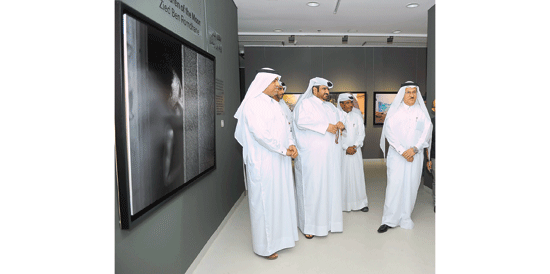

BY RAYNALD C RIVERA
DOHA: Young Arab photojournalists tell stories of their people through powerful images in ‘Stories of Change - Beyond the ‘Arab Spring’’ — an exhibition of World Press Photo premiered in Doha yesterday.
The expo in Katara Building No. 18, features 62 photos and six multimedia stories by 15 young photojournalists from Algeria, Morocco, Egypt, Tunisia and Libya, each telling stories of people’s lives after the Arab Spring, seldom reported by the international media nowadays.
The exhibition offers a fresh look into the daily life of people in these countries, challenges they face and issues confronting them as they move towards ‘democratisation’ and change. It also offers surprising insights into North Africa through the eyes of young local photojournalists.
The expo is an outcome of the Reporting Change training programme by Amsterdam-based World Press Photo for young local photographers from the five countries to strengthen their technical, visual, and journalistic skills.
“We trained them in workshops throughout the region starting with basic skills, but then focusing on how to tell a story with images. We worked with them for two years and ended up with a group of 20 most talented photographers who were given an assignment to produce a story,” Eefje Ludwig, Manager Education, World Press Photo Foundation, told The Peninsula.
The photos, Ludwig said, were made into a book, an online production and multimedia stories whose aim was not only towards participants’ career development but also spreading these stories to the world rarely seen in international media. “Hopefully, we succeeded in doing that by producing the book, the website and the exhibition that premieres here and hopefully will continue travelling throughout the region and the world.”
Each photojournalist presents images interspersed with stories of people, centring on a theme.
Mohammed Ali Eddin’s Beard Phobia shows men in Egypt who felt forced by social pressure to remove their beards as they became a subject of attacks because they were assumed as devout Muslims by their mere appearance.
In My Taboo Child, Zara Samiry explores challenges unmarried mothers and their children in Morocco face as the country considers being a single mother a taboo.
The focus is changes happening in their country, how they affect the ordinary people, how they visualise the daily life of people in their country, telling the smallest and the biggest stories.
How Egypt’s tourism sector, including guides, hotel workers and taxi drivers, has suffered as a result of Arab Spring is the subject of Revolution Up, Tourism Down by Roger Anis.
“I think it’s a wonderful opportunity to have the project set up by World Press Photo as a training project for young photojournalists, now materialise into a big exhibition which is professional. I’m impressed of the quality of the pictures and their artistic quality.
“I recommend that everybody come to Katara and have a look at the wonderful results of this project,” said Dutch Ambassador Yvette Burghgraef-Van Eechoud.
The Peninsula




